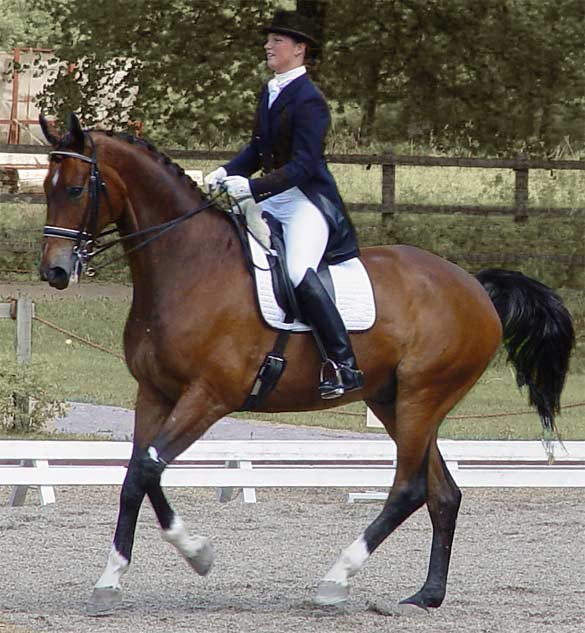Welcome!

Sustainable
tr.v. sus·tained, sus·tain·ing, sus·tains
To keep in existence; maintain.
To supply with necessities or nourishment; provide for.
To support from below; keep from falling or sinking; prop.
To support the spirits, vitality, or resolution of; encourage.
To bear up under; withstand:
To affirm the validity of:
To prove or corroborate; confirm.
To keep up competently.
[Middle English sustenen, from Old French sustenir, from Latin sustinēre : sub-, from
below; see sub- + tenēre, to hold; see ten- in Indo-European Roots.]
Dressage
dres·sage (drə säzh') n.
The guiding of a horse through a series of complex maneuvers by slight movements of the rider's hands, legs, and weight.
[French, preparation, training, dressage, from dresser, to set up, arrange, train, from Old French drecier, to set up, arrange. See dress.]
Foreword
This website concerns what a lot of people normally call 'Classical Dressage'. I prefer to call it 'Traditional Dressage', since 'classical' is such an over-used word. 'Classical' usually referes to the Greeks and the Romans before the birth of Christ, or possibly to the art of the latter half of the 18th and the early 19th centuries (Websters.com). It also means 'Standard and authoritative rather than new or experimental' which I guess is closer, but that takes away the possibility of experiments and inventions based on standards. In out scientific times, that would be a shame.
Another shame is that many dressage trainers, even, or especially the more dubious ones, claim to be 'Classical' in order to justify themselves and put themselves above criticism. There's no licence for calling oneself a 'Classical Dressage' instructor, and there's no clear specifications to what is classical or not. As Dr Thomas Ritter says on his 'Classical Dressage Discussion Group' forum, the old masters didn't even call it 'classical'. They just called it dressage.
To those that are not extensively educated into the art of Dressage, 'Classical Dressage' has become equal to any strutting riding with 'the poll always the highest point' of the horse, as is stipulated in the competition rules of the FEI. That is another reason I don't want to call it 'Classical'...
There's nothing unusual about the contents of the articles on this website - I've had so many comments from people who agree with me totally, and encourage me to keep up the good work. Only a few disagree. I can imagine that those who don't agree, don't feel compelled to sit down and write me an e-mail about it. And that's fine, too. What I hear from most of those that agree, though, is that they were so happy to find another soul that actually does agree with them, since that seems to be few and far between. Thank goodness for the internet!
What I think is unusual, though, is the pedagogic approach that I've taken in building and writing this site. I'm so much younger and have so much less experience compared to most of the authors of treatsies on dressage, that I have nothing new to add. I admit to standing on their shoulders and seeing a tad further than some of them did, but only thanks to them and modern technology. So there's nothing revolutionary at all. That's why I haven't constructed a new name with connotations of harmony, humane-ness or spirituality of some kind. It's the same old 'traditional dressage' that's been around for ages. Only I try to explain it in a modern way, to modern readers.
The difference is the learner perspective I take, and my passion for letting people think, feel and understand, not just do as they are told. Just doing as you are told has no place in our modern humanistic society, whether it be dressage or anything else. To be treated as less than intelligent, is unworthy of any human being. Or horse, for that matter.
 /Theresa /Theresa
|

